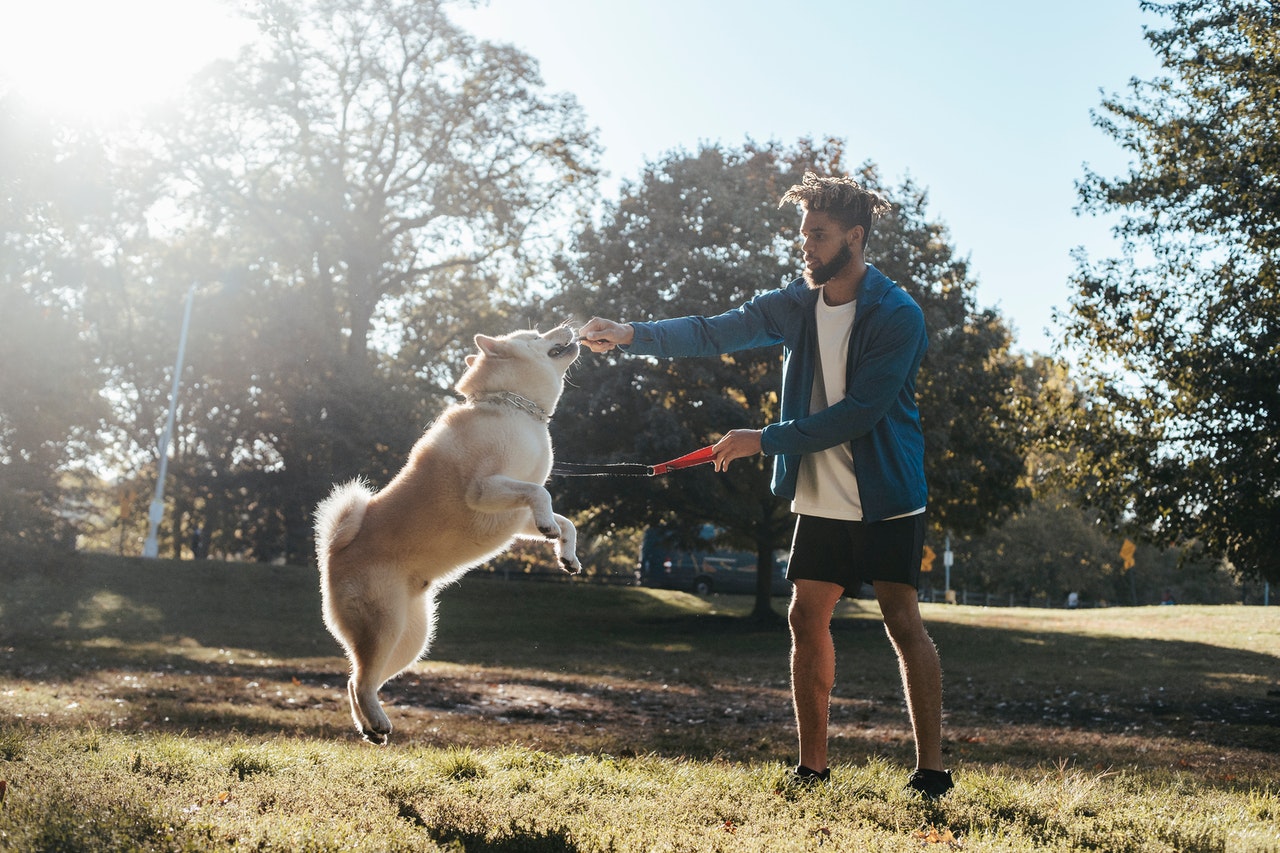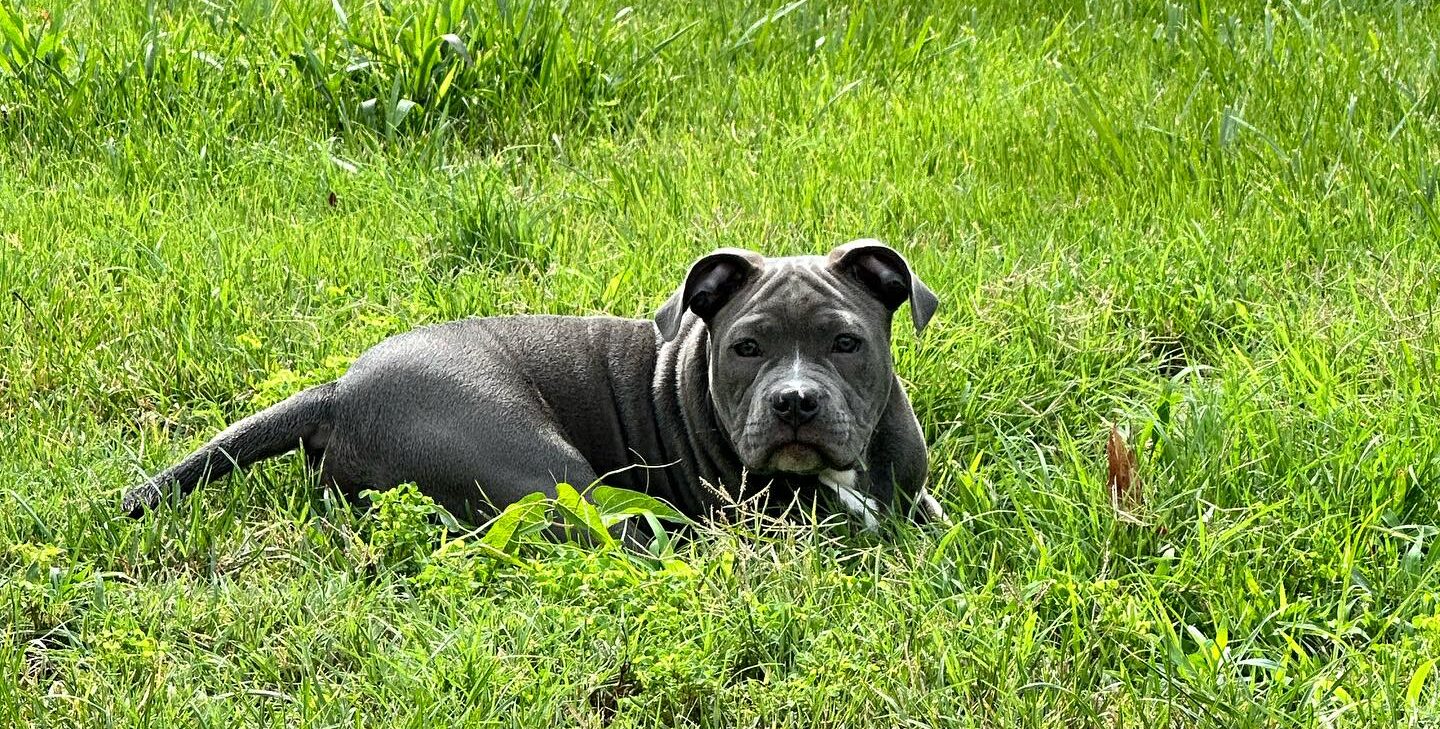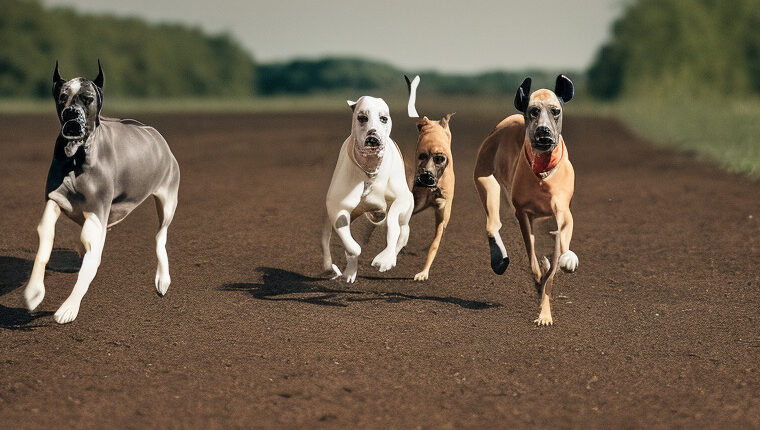Last Updated on June 13, 2024
Training a dog to fetch is an essential skill that every dog owner should teach their furry companion. Not only is it a fun activity for both you and your dog, but it also provides a great form of exercise and mental stimulation for your pet. Here is a step-by-step guide to a fun and engaging game of fetch with your dog
Playing Fetch With Your Dog
 Before you begin training your dog to fetch, it’s important to understand that different breeds of dogs have different levels of natural retrieving instincts. Some breeds, such as Labrador Retrievers and spaniels, have a strong natural drive to retrieve. Other breeds, such as Bulldogs and Pugs, may not have as strong of an instinct. It’s important to keep this in mind when training your dog to fetch, as it may take more patience and training for some breeds than others.
Before you begin training your dog to fetch, it’s important to understand that different breeds of dogs have different levels of natural retrieving instincts. Some breeds, such as Labrador Retrievers and spaniels, have a strong natural drive to retrieve. Other breeds, such as Bulldogs and Pugs, may not have as strong of an instinct. It’s important to keep this in mind when training your dog to fetch, as it may take more patience and training for some breeds than others.
- Step 1: Choose the right fetching toy.
When choosing a fetching toy for your dog, it’s important to select one that is appropriate for its size and breed. For example, a small toy may be suitable for a toy breed, but not for a larger breed. A rubber ball or a soft plush toy can be suitable for small dogs, while a Frisbee or a rubber ring can be more appropriate for larger breeds. It is also important to choose a toy that is durable, as your dog will be carrying it in their mouth.
- Step 2: Get your dog’s attention.
Once you have chosen the toy, it’s time to begin training! The first step is to get your dog excited about the toy. You can do this by playing with the you in front of them and encouraging them to chase after it. To get your dog’s attention, you can use their name or a specific command. For example, you can say “Fido, come here” or “watch me.” This helps your dog to focus on you and the task at hand. Once they have shown interest in the toy, it’s time to begin teaching them to retrieve it.
- Step 3: Introduce the fetching toy.
When introducing the fetching toy to your dog, it is important to let them sniff it and get familiar with it. This will help them to understand that the toy is meant for playing and not just an ordinary object. You can also play with the toy yourself to show your dog how much fun it can be.
- Step 4: Encourage your dog to take the toy.
Once your dog is familiar with the toy, it’s time to encourage them to take it in their mouth. You can use a command such as “take it” or “fetch” to help your dog understand what you want them to do. Keep in mind that some dogs may take longer than others to take the toy, so be patient and persistent.
- Step 5: Reward your dog for taking the toy.
When your dog takes the toy in their mouth, it’s important to reward them with a treat or a lot of praise. This will help to reinforce the behavior and make it more likely that they will take the toy again in the future. Remember that dogs will always prefer positive reinforcement methods.
- Step 6: Practice throwing the toy.
Once your dog is comfortable taking the toy, it’s time to practice throwing it. Start by throwing the toy a short distance and encouraging your dog to go after it. As your dog gets better at fetching, you can gradually increase the distance. Keep in mind that some dogs may be more comfortable chasing after a thrown toy than others, so be patient and adjust the distance accordingly.
- Step 7: Practice regularly.
Fetching is a learned behavior, so it’s important to practice regularly. Set aside time each day to play fetch with your dog. This will help them to become more confident and comfortable with the game. Regular practice will also help to strengthen the bond between you and your dog.
What if my dog doesn’t seem interested in the fetching toy?
If your dog doesn’t seem interested in the fetching toy, try using a different type of toy or varying the way you present the toy. For example, try hiding the toy and having your dog find it, or using a toy that makes noise to pique their interest. It’s also important to note that some dogs may take longer than others to become interested in fetching, so be patient and persistent.
My dog takes the toy but doesn’t bring it back to me, what should I do?
If your dog takes the toy but doesn’t bring it back to you, it could be that they haven’t learned the “bring” or “drop” command yet. Try teaching them this command separately before practicing fetching. You can also try to coax them back to you by calling their name or using a treat as a reward.
How can I make the game of fetch more challenging for my dog?
To make the game of fetch more challenging for your dog, you can try increasing the distance of the throws, using different types of toys, or adding obstacles for your dog to navigate. You can also try hiding the toy or playing fetch in different locations.
My dog only fetches certain types of toys, how can I get them to fetch other types?
If your dog only fetches certain types of toys, you should then try to introduce new types of toys gradually. We will always recommend you reward them for interacting with the fetching toy. You can also try to coax your dog with treats or giving them the new toy with the old one to encourage them to play with it.
How long will it take to teach my dog to fetch?
The amount of time it takes to teach a dog to fetch can vary depending on the dog’s breed, age. Their individual personality does play a big part too. Some dogs may take a few days to learn, while others may take a few weeks. It’s important to be patient and consistent when training your dog to fetch.
How can I tell if my dog is getting enough exercise when playing fetch?
One way to tell if your dog is getting enough exercise when playing fetch is to observe their behavior after the game. If they seem tired and happy, then they’re probably getting enough exercise. You can also monitor their weight and energy level.
How often should I play fetch with my dog?
How often you should play fetch with your dog depends on their individual needs and the level of activity they require. A good rule of thumb is to play fetch for at least 15 minutes to 30 minutes a day. However, do note that this can vary depending on the dog’s age, breed, and size.
What if my dog becomes possessive of the fetching toy?
It is inevitable that your dog refuses to let go of the fetching toy. If this is the case, it will be important to teach them to share and to give the toy back to you. You can do this by using a “drop” or “give” command and rewarding them when they comply.
My dog is getting too rough when playing fetch, what should I do?
If your dog is getting too rough when playing fetch, it’s important to teach them to be gentle. You can do this by using a “gentle” command and rewarding them when they comply. You can also stop the game if your dog gets too rough and resume it when they calm down.
How can I teach my dog to fetch in a specific location?
To teach your dog to fetch in a specific location, you can use a “fetch” command and a specific gesture or point to the location where you want them to fetch the toy. Reward them when they bring the toy back to the specific location. Practice this consistently until your dog understands the command and the location.
How can I teach my dog to fetch different objects like sticks or rocks?
To teach your dog to fetch different objects like sticks or rocks, start by introducing the new object to your dog while using the same “fetch” command as you would with their regular fetching toy. Reward them when they pick up the new object and bring it back to you. As with any new behavior, it is important to be patient and consistent. Repeat the process, gradually increasing the distance and difficulty of the fetch. Be sure to supervise your dog when they are fetching sticks or rocks. This is because some of it can be sharp or dangerous for them to pick up or chew.
Conclusion
So there you have it, a comprehensive step-by-step guide to training your dog to play fetch. Indeed, playing fetch is a great way to provide your dog with exercise as well as mental stimulation. It is also a fun activity that you can enjoy together. Remember to choose the right object for your dog and use positive reinforcement and commands. Of course, you should always be patient as it may take time for your dog to learn. With patience and consistency, your dog will be playing fetch with you in no time!
 Dog N Treats All dogs deserve to be pampered
Dog N Treats All dogs deserve to be pampered



